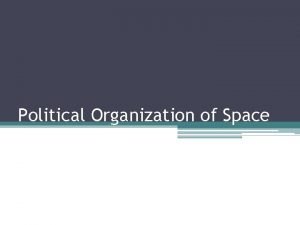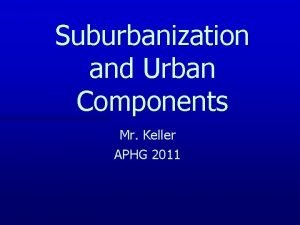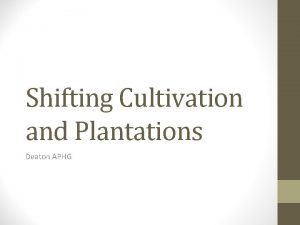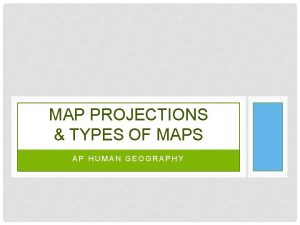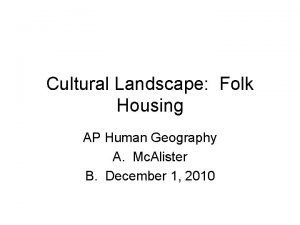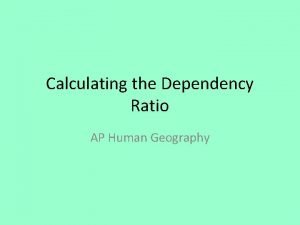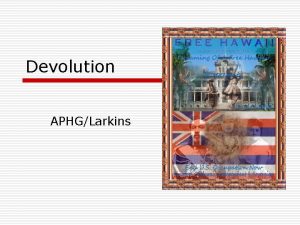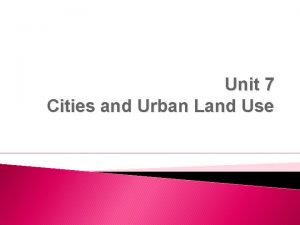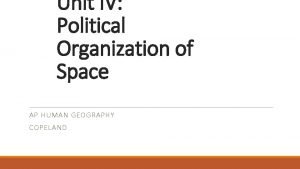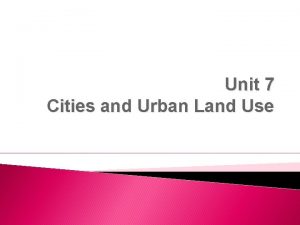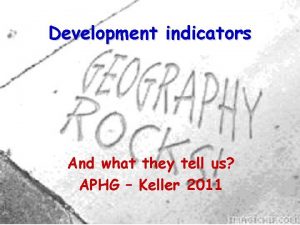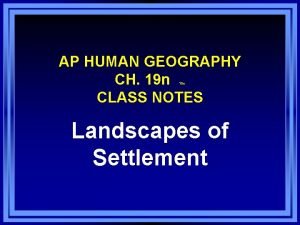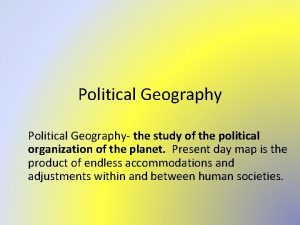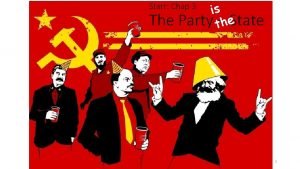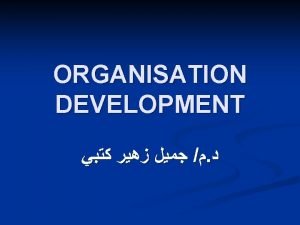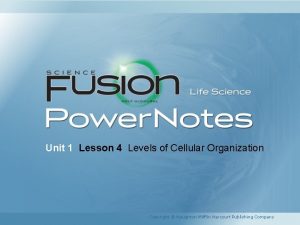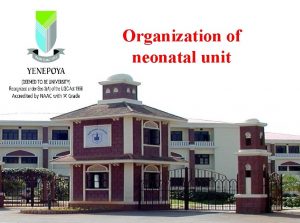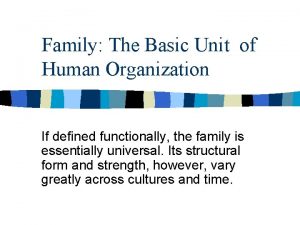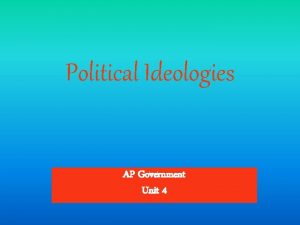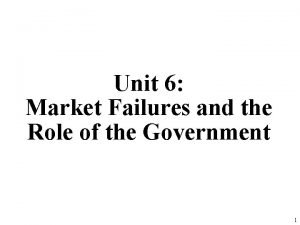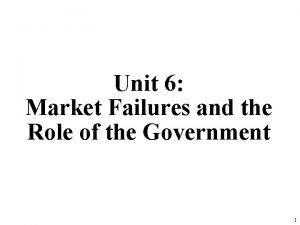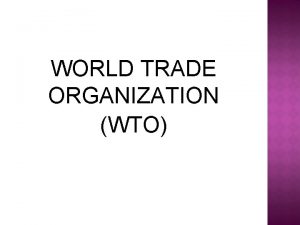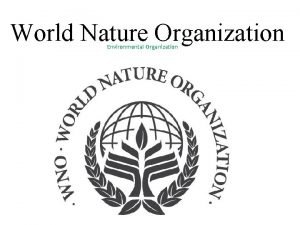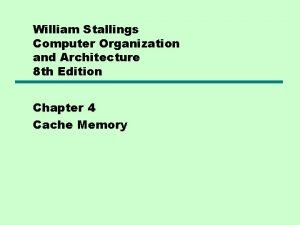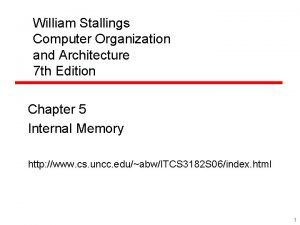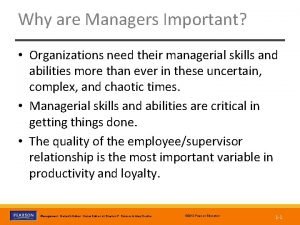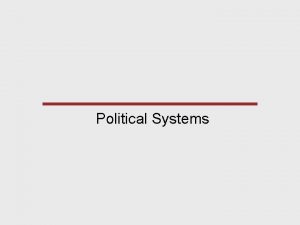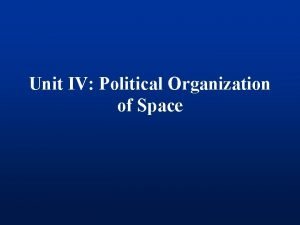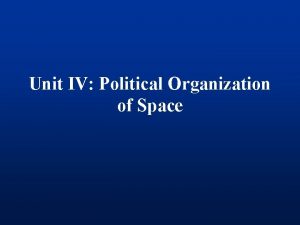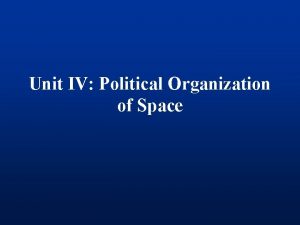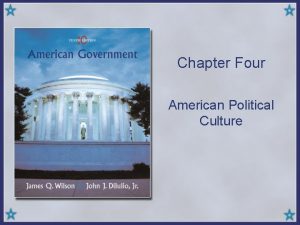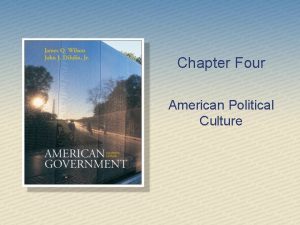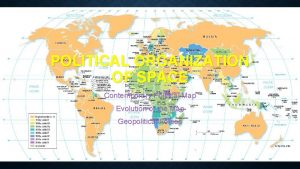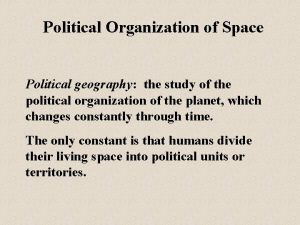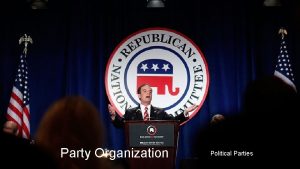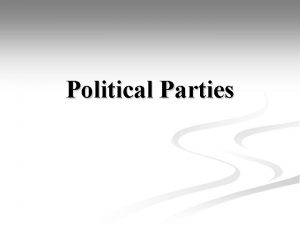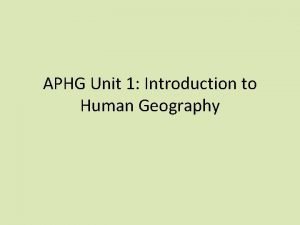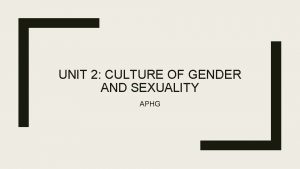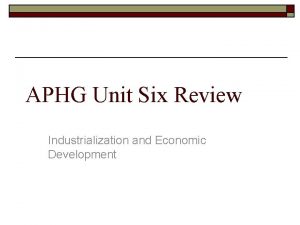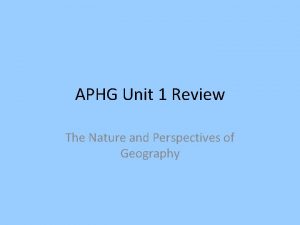APHG Unit Four Political Organization of Space Political





























































- Slides: 61

APHG Unit Four Political Organization of Space

Political Geography n Political Geography is the study of the political organization of the planet ¡ n n Since the beginning of history, humans have divided the planet into political units, or territories Territoriality: effort to control pieces of the Earth’s surface for political and social reasons Political Culture: the collection of political beliefs, values, practices, and institutions that the government is based on

Characteristics of a State n A politically organized territory n Administered by a sovereign government n Recognized by a significant portion of the international community. (Ex: Kosovo, the Southern United States) n A state must also contain: ¡ a permanent resident population ¡ an organized economy

Morphology n Territorial Morphology is a term that describes the shapes, sizes, and relative locations of states

Shapes of States. Compact – The most efficient form. A state whose territory is nearly circular. Because all places could be reached from the center in a minimal amount of time making it the most efficient for roads, railway lines, other infrastructure. Examples: Burundi, Kenya, Rwanda, and Uganda


Shape of States n n Prorupt - A state that is nearly compact but possess one or two narrow extensions of territory, which isolates a portion of the state. n The proruption can be a physical (penninsula) elongation of land or may have economic or strategic significance – access to resources, sea, establishment of a buffer zone, etc… Examples: Democratic Republic of the Congo


Shape of States n Elongated – A state whose territory is long and narrow. The least efficient shape administratively. It may sacrifice national cohesion to promote eco strength. Example: Chile, Italy, and Gambia


Shape of States n n Fragmented – Entirely made up of islands or territory, separated by another state, or is a state with an offshore island. - contains isolated parts, separate and discontinuous. Examples: Indonesia, United States, former East and West Pakistan


Shape of States n n n Perforated - A state that completely surrounds a territory that it does not rule. That area is called an “enclave” and it may be independent or part of another state. An area outside of the state’s borders that belongs to the state is called an “exclave”. (Ex: Alaska) Example: Italy or South Africa


Size of States n Microstates: a country with a land size of a few square miles ¡ n Examples: Vatican City, Monaco Russia is the largest country in the world, followed by Canada, China, the United States, and Brazil

Relative Location of States n n Landlocked State: countries lacking an ocean coastline, and surrounded by other states Sometimes a landlocked country will try to access a foreign port, or become prorupted ¡ Kazakhstan is the largest landlocked state

The Nation-State n n n State: a territorially organized piece of land, or country Institution: stable, long-lasting organizations that help to turn political ideas into policies Nation: a group of people that is bound together by a common political identity

The Nation-State n A nation-state is a state whose territorial extent coincides with a group of people, or nation ¡ n Binational/Multinational State: a state with more than one nation ¡ n Examples: Denmark, Iceland, The United States Ex: The former USSR Stateless Nation: a group of people without a country ¡ Ex: Palestine, the Kurds

Organization of States n n Core Area: the heartland of an area; identified by levels of population concentration and transportation networks Multicore State: a state with more than one core area ¡ Example: Nigeria

The Capital City n n n In most states, the capital is not only the center of government, but also the economic and cultural center Primate City: the largest city in a nation and one where the second largest city is significantly smaller Forward Capital: the capital city serves as a model for national objectives ¡ Ex: Japan and Brazil

Colonialism and Imperialism n n Colonies: Dependent areas given fixed and recorded boundaries where none existed before Imperialism: empire building

The Berlin Conference: 1884 -85 n n Representatives from 14 countries, mainly from Europe, met in Berlin to agree on how to divide Africa. At the time of the meeting, about 80% of Africa was still under African control. They ignored traditional cultural and linguistic boundaries already present in Africa, and drew their own borders. Results: ¡ ¡ ¡ Hostile groups put together United groups split apart Traditional migration routes cut off

By the early 1900’s, only Liberia and Ethiopia had retained their sovereignty.

The Belgian Congo n n n Ruled by King Leopold II, Belgium controlled a large region of land in what is today the Democratic Republic of Congo. Why? The region was wealthy in rubber.

The Belgian Congo n n Refusal to do so often resulted in mutilations, beatings, and death. It was common for natives refusing to work to have their hands cut off, as a stern warnings to others as to what would happen should they refuse to work.

n “It is blood-curdling to see them (the soldiers) returning with the hands of the slain, and to find the hands of young children amongst the bigger ones evidencing their bravery…The rubber from this district has cost hundreds of lives, and the scenes I have witnessed, while unable to help the oppressed, have been almost enough to make me wish I were dead. ” ¡ Belgian official

n COLONIALISM AND ITS CULTURAL IMPACT ON AFRICA

Legacies of Imperialism in Africa Religion Language Other European ideas and technology, medicine, ethics, etc. were introduced. Post Colonial Difficulties

Redrawing Africa n n n Find a partner. If there an odd number of student, there may be ONE group of three. Grab a World Geography book, instructions, map, and long white paper. Get creative.

Spatial Organization of States Turn in “Redrawing Africa”. Now.

Systems of States n n n Unitary System: one that concentrates all policymaking powers in one central geographic place (European States) Confederal System: spreads the power among many sub-units and has a weak federal government (Switzerland) Federal System: divides power between strong central government and sub-units (US, Canada, Australia)

Boundaries n n n A state is separated from its neighbor by boundaries, or invisible lines that mark the extent of a state’s territory and the control the leaders have Historically, frontiers separated states Frontier: a geographic zone where no state exercises power ¡ Ex: Antarctica and the Rub al-Khali

Types of Boundaries n Physical Boundary: Rivers, lakes, and oceans are the most common; also include mountains and deserts ¡ Law of the Sea: coastal boundaries extend 12 nautical miles from the coast

Types of Boundaries n Cultural Boundaries: boundary set by ethnic differences such as language and religion ¡ n Ex: India and Pakistan Geometric Boundaries: straight, imaginary lines that generally have a reason behind them

Functions of Boundaries n n n Boundaries serve as symbols of sovereignty, or the ability of the state to carry out actions or policies within its borders Sovereignty promotes nationalism, or a sense of unity with fellow citizens and loyalty to the state Internal Boundaries: boundaries within a state ¡ Ex: The United States, Canada, China

Boundary Disputes n n Almost half of the world’s states have been involved in boundary disputes Positional Dispute: occurs when states argue about where the boundary actually is ¡ Ex: Argentina and Chile

Boundary Disputes n n Territorial Disputes: arise over ownership of a region, usually around mutual border Usually one state claims the other should belong to them due to ethnic and language commonalities ¡ Ex: German invasion of Poland

Boundary Disputes n Resource Dispute: dispute involving natural resources that lie in border areas ¡ n Ex: Iraq and Kuwait Functional Dispute: arise when neighboring states cannot agree on policies that arise in a border area ¡ Ex: US and Mexico border

Electoral Geography n n Electoral Process: the methods used in a country for selecting its leaders Electoral Geography: the study of how the spatial configuration of electoral districts and voting patterns reflect and influence social life Gerrymandering: the attempt to redraw boundaries to improve chances of winning election Minority/Majority Districting: rearranging districts to allow a minority representative to be elected ¡ Ex: North Carolina

Supranational Organizations n Cooperating groups of nations that operate on either a regional or international level for all major decisions and rules

Challenges to the Modern State n Centripetal Forces: bring people together ¡ n Includes Nationalism, Institutions, Television, and Transportation Centrifugal Forces: destabilizes the government and encourages the country to fall apart ¡ Includes Multinationalism, Religious Conflicts, and Separatist Movements

Devolution n Devolution is the tendency to decentralize decision-making to regional governments

Devolution-Ethnic Forces n Ethnic forces that can cause devolution usually occur because of multinationalism; an ethnic group sees itself as a separate unity from the state ¡ Examples: Canada and Ireland

Devolution-Economic Forces n Economic forces can devolve a state if the economic activities of the state vary by region; one region of the state does better economically than the rest of the state ¡ Examples: Italy and Spain

Devolution-Spatial Forces n Spatial forces cause devolution if a part of the state is separated from the rest of the state due to physical or other barriers ¡ Examples: East and West Pakistan and Puerto Rico

World Domination Theories

Geopolitics n The study of the spatial and territorial dimensions of power relationships within the political-territorial order

Geopolitics n n n Friedrich Ratzel (1844 -1904): developed the study of geopolitics; compared the state to an organism with a predictable rise and fall of power Without “nourishment” (expansion), the state will die Forgotten theory, until adopted by Nazi Germany to explain their expansion by force

Geopolitics n n Halford Mackinder (1861 -1947) was concerned with the power relationship around Britain’s empire; believed Britain’s empire revolved around the sea, but eventually a land-based power would rule the world; Heartland Theory: the “pivot area” of the world (Eurasia), hold the resources to dominate the world; 1904 ¡ Used by Russia after WW II

Heartland Theory Whoever rules East Europe commands the Heartland Whoever rules the Heartland commands the World Island Whoever rules the World Island commands the World

Geopolitics n Rimland Theory: challenges the Heartland Theory; says the Eurasian Rim holds the power to dominate the world; rim includes land that encircles the Heartland includes China, Korea, Japan, SE Asia, India, the Arabian Peninsula, and Europe ¡ Developed by Nicholas Spykman

Supranational Organizations

Supranational Organizations n The United Nations (UN) ¡ ¡ ¡ 191 Member States Membership is voluntary UN Peacekeeping Forces Security Council (US, Britain, France, China, and Russia) World Bank and International Court of Justice n Anyone for Model UN next year?

Supranational Organizations n North American Treaty Organization (NATO) ¡ ¡ ¡ 28 Member Nations including the US, Canada, and Turkey Developed as a political association The combined spending of NATO on defense is 70% of the world’s defense spending

Supranational Organizations n Organization of Petroleum Exporting Countries (OPEC) ¡ ¡ ¡ 12 Member Countries including Venezuela, Ecuador, and Nigeria Purpose is to control the worldwide supply of oil Powerful political force as well

Supranational Organizations n North Atlantic Free Trade Agreement (NAFTA) ¡ ¡ Agreement between the United States, Canada, and Mexico Trade bloc designed to promote economic prosperity

Supranational Organizations n European Union (EU) ¡ ¡ ¡ 27 Member States Economic and Political agreements Three Pillars of the EU: n n n Trade and other economic matters; including a single currency and European Central Bank Justice and home affairs; asylum, border crossing, immigration, and international justice Common foreign and security policy; joint positions and actions, common defense policy

Forces of Change n n n Democratization Movement toward Market Economies Revival of Ethnic or Cultural Politics

Democratization n The movement of a country’s government towards a democracy ¡ ¡ ¡ First Wave: developed gradually over time Second Wave: occurred after the Allied victory in WW II Third Wave: began in the 1970’s and is continuing today; characterized by defeat of dictator or totalitarian rule in South America, Eastern Europe, and Africa; Samuel Huntington

Movement Towards Markets n Many countries are moving from socialism towards capitalism ¡ ¡ ¡ Command Economy: supply determined by the state Market Economy: demand determined by consumer Mixed Economy: Government has a say in what is produced, but competition still exists n ¡ Ex: Germany Privatization: the transfer of state-owned property to private ownership

Revival of Ethnic of Cultural Politics n n n Fragmentation: divisions based on ethnic or cultural identities Nationalism: identities based on nationhood Politicization of Religion: the domination of religion in World Politics ¡ Samuel Huntington claims our next worldwide conflict will be based on clashes of civilizations
 Political organization of space definition
Political organization of space definition Geri flanary
Geri flanary Township and range ap human geography
Township and range ap human geography What is suburbanization ap human geography
What is suburbanization ap human geography Shifting cultivation ap human geography
Shifting cultivation ap human geography Choropleth map ap human geography
Choropleth map ap human geography What is outsourcing aphg
What is outsourcing aphg New england housing styles ap human geography
New england housing styles ap human geography Elderly support ratio definition ap human geography
Elderly support ratio definition ap human geography Remote sensing ap human
Remote sensing ap human Gis definition ap human geography
Gis definition ap human geography Sex ratio aphg
Sex ratio aphg Devolution aphg
Devolution aphg Bid rent theory
Bid rent theory Examples of prorupted states
Examples of prorupted states Urban realms model example
Urban realms model example Structuralist theory aphg
Structuralist theory aphg Mega city definition ap human geography
Mega city definition ap human geography Intensive subsistence agriculture aphg
Intensive subsistence agriculture aphg Process organization in computer organization
Process organization in computer organization Point-by-point comparison
Point-by-point comparison Unit 6 review questions
Unit 6 review questions Nicholas spykman rimland theory
Nicholas spykman rimland theory Persian wars timeline
Persian wars timeline Political party organization chart
Political party organization chart Four levels of organization
Four levels of organization Joint space vs cartesian space
Joint space vs cartesian space Space junk the space age began
Space junk the space age began Camera space to world space
Camera space to world space Unscented trajectory chapter 5
Unscented trajectory chapter 5 World space to screen space
World space to screen space What shape has four sides and four corners
What shape has four sides and four corners Skin assessment charting
Skin assessment charting An organization is a consciously coordinated social unit
An organization is a consciously coordinated social unit Organisation as a social unit
Organisation as a social unit Lesson 4 levels of development
Lesson 4 levels of development Organization of neonatal unit
Organization of neonatal unit Basic unit of organization in society
Basic unit of organization in society Ap gov unit 4 political ideologies and beliefs
Ap gov unit 4 political ideologies and beliefs Electrostatic duster diagram
Electrostatic duster diagram Class 4 unit 14
Class 4 unit 14 Unit 6 market failures and the role of the government
Unit 6 market failures and the role of the government Unit 6 market failures and the role of the government
Unit 6 market failures and the role of the government Unit four
Unit four Metode pembiayaan langsung (direct financing method)
Metode pembiayaan langsung (direct financing method) Right triangle trigonometry examples
Right triangle trigonometry examples English unit conversion
English unit conversion Unit test unit test review algebra 2
Unit test unit test review algebra 2 Contoh kebutuhan mengitung unit cos unit kerja rekam medis
Contoh kebutuhan mengitung unit cos unit kerja rekam medis Unit process and unit operation
Unit process and unit operation Difference between unit process and unit operation
Difference between unit process and unit operation Setiap unit akuntansi dianggap sebagai unit yang mandiri
Setiap unit akuntansi dianggap sebagai unit yang mandiri Six traits
Six traits Function of world trade organization
Function of world trade organization World nature organization is located in
World nature organization is located in Supervisory organisation
Supervisory organisation 09 schanlan street, uitenhage
09 schanlan street, uitenhage Computer organization and architecture 10th solution
Computer organization and architecture 10th solution Pentium 4 cache organization
Pentium 4 cache organization Advanced dram organization
Advanced dram organization Role of business manager in an organization
Role of business manager in an organization What is a organization
What is a organization
